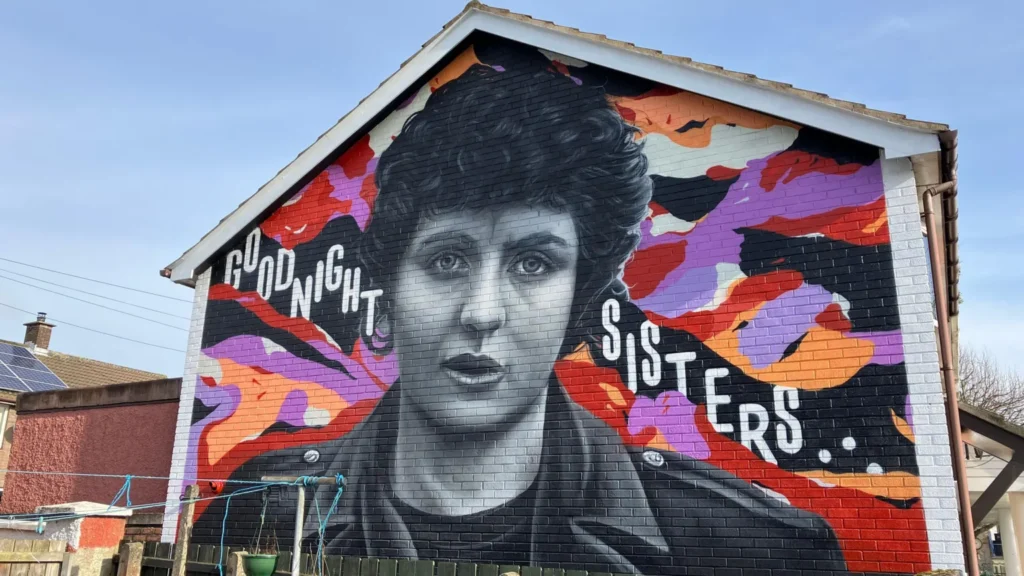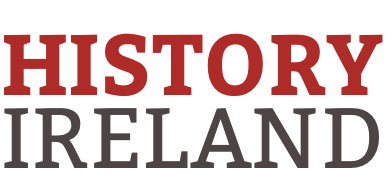BY DONAL FALLON
MNÁ NA hATHBHEOCHANA
Good news from the Public Record Office of Northern Ireland (PRONI), where a new exhibition, Mná na hAthbheochana (‘Women of the Revival’), marks a significant milestone as the first Irish-language exhibition hosted by the institution. Telling the story of the women who were central to the foundation of the urban Gaeltacht at Bóthar Seoighe in the late 1960s, as well as those who successfully campaigned for the founding of Irish-medium schools, the exhibition is a positive and enlightening journey which received funding from the National Lottery Heritage Fund. Elsewhere in Belfast, a recent plaque unveiled at Cultúrlann McAdam Ó Fiach on the Falls Road honours Revd Robert Wilbur Gillespie and celebrates connections between Belfast’s Presbyterian community and the Irish-language revival movement.

NELL McCAFFERTY REMEMBERED
In our last edition, Museum Eye focused on a recent exhibition of Bill Rolston’s photographs of murals across Northern Ireland. Since then, a new mural to Nell McCafferty has been unveiled in her native Derry, completed by the Peaball Street Art Collective. In a statement read to the crowd in attendance, President Higgins described McCafferty as a ‘woman of extraordinary courage, intellect and humanity’, as well as a ‘fearless journalist and unrelenting campaigner’. The mural includes the words ‘Goodnight sisters’, a sign-off for the journalist and the title of a collection of her writings.
ON THE MOVE
EPIC Ireland (the Irish Emigration Museum) and the Department of Foreign Affairs recently issued a call for personal recollections and stories to mark the centenary of the Irish passport. These days we seem to live in an age of ‘passport pragmatism’, when moving through airport arrivals more quickly may mean more than the constitutional question to those deciding what to pack for their holidays. To Ian Paisley Jr, the passport amounts to ‘a European document with an Irish harp stuck on the front posing as a passport’. In truth, the beautifully designed Irish passport (which includes words of Ulster-Scots poetry within its pages) is a document with a long and storied history and we look forward to seeing what stories EPIC’s appeal unearths.
HIBERNIAN 150
This year marks the 150th anniversary of the foundation of Hibernian Football Club, a product of the Irish diaspora in Edinburgh. As anyone who has read Irvine Welsh’s Trainspotting will know, the Hibees were the club of choice for James Connolly. In a 1906 letter, Connolly wrote wryly that ‘the only information I got lately was when a little Scotchman in the shop told me that “the Hearts were in the final of the Scottish Cup; they knockt hell oot o’ tha Hibs”. Whereat I felt very much depressed.’ A full programme of events is planned to mark the milestone anniversary, including events in Connolly’s native Cowgate.
IMIRCE
Good news from the University of Galway, who have announced that their project of archiving the letters of Irish emigrants to North America has been awarded a grant of $300,000 from the Carnegie Corporation of New York. Imirce—the Irish word for migration—is an important collection of memoirs, postcards and individual letters that provide insights into the lives of some of those who left Ireland for a better life over the centuries. A spokesperson for the Carnegie Corporation noted that ‘the founder of our foundation, Andrew Carnegie, provides one of the great immigration stories. He started life as a poor boy in Scotland before emigrating in 1848 to America, where he began work in a cotton factory before making his fortune in steel. He then gave away this fortune through his philanthropy.’
UNTOLD: STORIES OF THE IRISH IN THE BRITISH ARMY
From Waterloo to Laing’s Nek, the contribution of the Irish to the history of the British Army is long and varied. In March plans were announced for a new museum which will explore these stories across two sites in Belfast and Enniskillen, with aspirations for a £13.6 million museum. No. 28 Bedford Street, in the heart of what was once Belfast’s linen quarter, is one building being explored for the project. Museum chair Hugh Crossey notes that ‘we are already surprised at the number of people from a range of traditions who have discovered ancestral and family histories amongst Irish regiments in the British army. When fully completed I would encourage everyone to visit this new immersive exhibition and learn more about our—and potentially their—shared heritage.’
